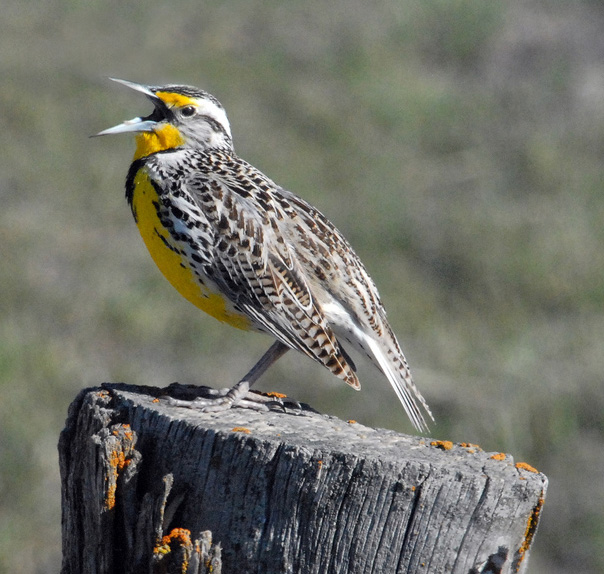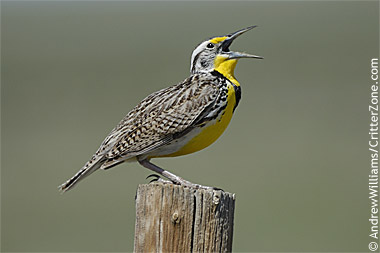Western Meadowlark (Sturnella neglecta); photo by Dan Dzurisin on Flickr (noncommercial use permitted with attribution / no derivative works).
Western Meadowlark
Nebraska designated the western meadowlark as official state bird in 1929. The Western Meadowlark (Sturnella neglecta) is a familiar songbird of open country across the western two-thirds of the continent.
In the same family as blackbirds and orioles, adults have a black and white striped head; long, pointed bill; yellow cheeks; bright yellow throat; and a distinctive black "V" on breast. The western meadowlark is often seen perched on fence-posts in grasslands and agricultural areas singing its distinct 7-10 note melody (their flute-like song usually ends with 3 descending notes).
Western meadowlarks forage on the ground and beneath the soil for insects, grain and weed seeds (it's estimated that at least 65-70% of their diet consists of beetles, cutworms, caterpillars, grasshoppers, spiders, sow bugs, and snails). They also nest on the ground - constructing a cup of dried grasses and bark woven into the surrounding vegetation. This nest may be open or have a partial or full grass roof, and sometimes a grass entry tunnel several feet long.
Western meadowlark predators include hawks, crows, skunks, coyotes, raccoons, and weasels. Western meadowlarks are still abundant but declining throughout their range; they are a protected non-game species.



